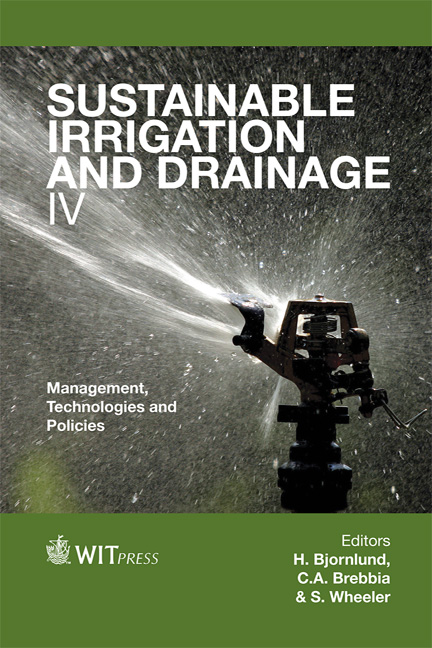Recreational Value Of Irrigation Infrastructure: A Case Study Of Chestermere Lake, Alberta, Canada
Price
Free (open access)
Transaction
Volume
168
Pages
12
Page Range
413 - 424
Published
2012
Size
460 kb
Paper DOI
10.2495/SI120361
Copyright
WIT Press
Author(s)
R. Bewer, W. Xu & H. Bjornlund
Abstract
Irrigation infrastructure is a central component of agriculture in southern Alberta. It is often associated with ecosystem services (ES) that may enhance people’s well-being. However, population growth, increasing economic activity and climate change may threaten aquatic ecosystem health in Alberta’s waterways and consequently the provision of ES. In order to meet ecosystem needs and maintain the provision of ES, new policies and regulations are initiated to formulate a sustainable water allocation and reallocation system in Alberta. It is, therefore, critical to understand what types of ES benefits and economic values are provided by water bodies faced with competing demands from various sectors. This paper describes the recreational activities associated with an irrigation reservoir, Chestermere Lake and estimates its recreational value in monetary terms. A mixed method is used by combining a qualitative description based on observations and interviews with stakeholders with a quantitative analysis using geographic information system (GIS) analysis and the travel cost method. The findings reveal a substantial economic value of the reservoir in addition to the variety of recreational ES benefits offered by the reservoir. The findings of this research provide valuable information for decisions makers who aim to design water management policies and make water management decisions to balance the needs of water for ecosystem health, extractive use and recreation. Keywords: travel cost method, GIS, ecosystem services, recreation, irrigation infrastructure, water management.
Keywords
travel cost method, GIS, ecosystem services, recreation, irrigation infrastructure, water management.





